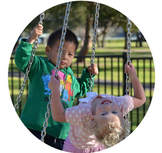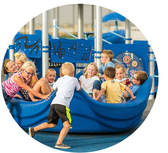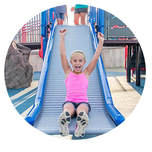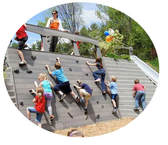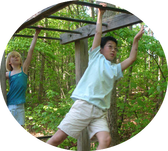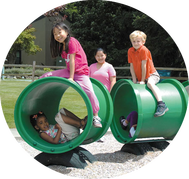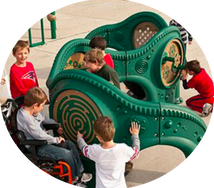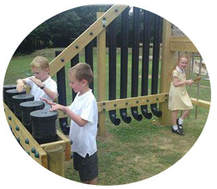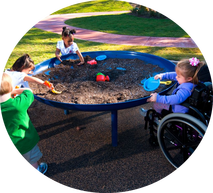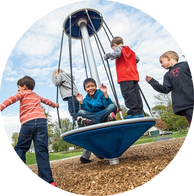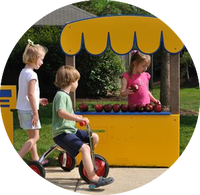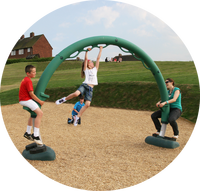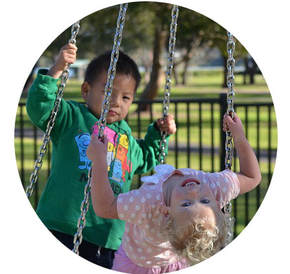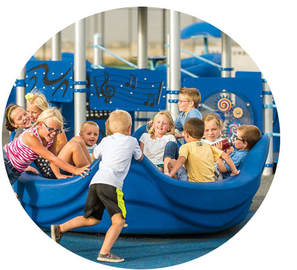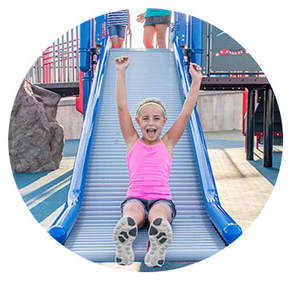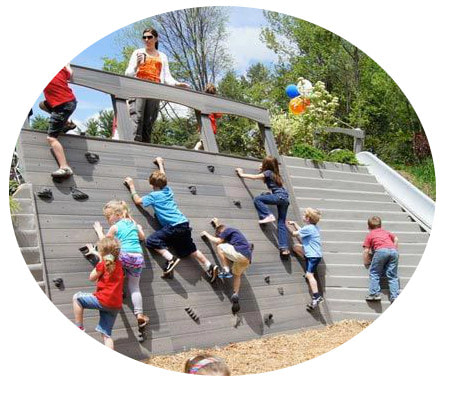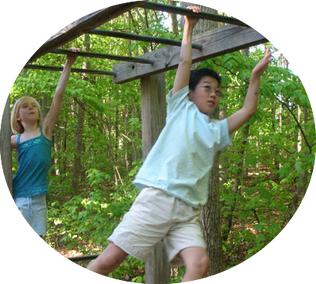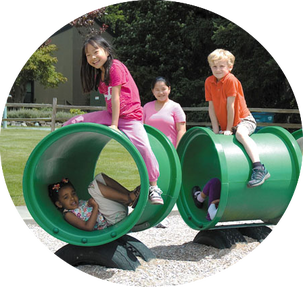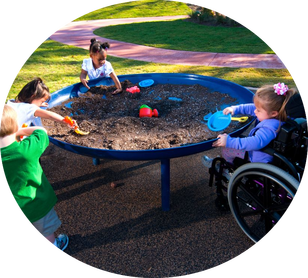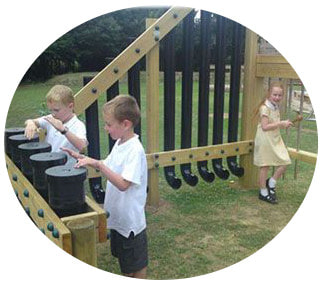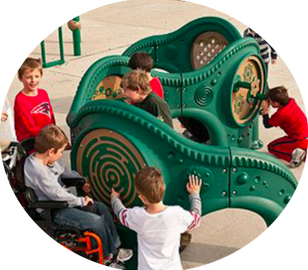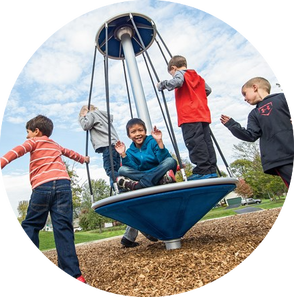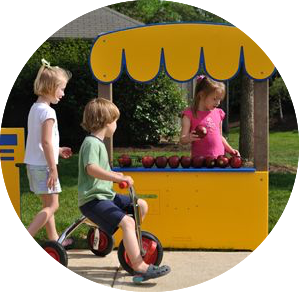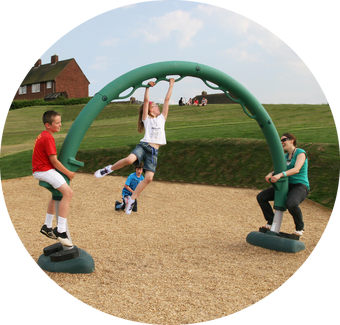TYPES OF PLAY
PHYsical
Sensory
Social
Physical PLay
|
Swinging is one of the most critical ways to develop a sense of balance — the motion creates vestibular stimulation, activating the inner fluids in our ear canal which are critical to maintaining body posture and equilibrium.
Swinging can be serious therapy for people with various autism spectrum disorders as it helps to process the stimuli from our senses. Swinging restores balance to the vestibular system, provides proprioceptive input (deep pressure), and creates a feeling of being “in balance.” The motion also soothes, relaxes and increases concentration. In fact, children who have trouble focusing on tasks often find it easier to concentrate while sitting in a swing. |
|
Spinning has a profound impact on the brain. Rotary vestibular input (caused from spinning) is the most powerful form of sensory input that the brain can process. This builds new brain pathways that improve learning potential, spacial awareness, and rhythm. For children who do not get dizzy, encourage spinning in prone extension (on tummy) to help the brain learn to register the feeling of rotary input.
|
|
Sliding activates our vestibular system and visual sensory systems. Vestibular input coordinates movement of our eyes, head and body, which affects our body’s balance, muscle tone, visual-spatial perception, auditory-language perception and emotional security. Since this input is how we balance and move, all children require it for growth and development.
Roller slides provide excellent sensory feedback. |
|
Climbing helps create "sensory-motor intelligence" and "visual spacial perception," allowing kids to effectively relate to objects and navigate the world. Some of the requirements for climbing contribute to children's cognitive development - memory, problem solving, and imagery / visualization.
Steps, ramps and crawl tubes help with gait improvement and strengthens hips, shoulder girdles, and core musculature. |
|
Overhead Challenges like swinging from one arm to another is call brachiation. The benefits of brachiation include strength, flexibility, visual perception, balanced locomotor patterns, and confidence.
Pull up bars that are low enough that children can access independently (helps promote upper extremity, hand and core strength) |
SENSORY PLAY
|
The tactile system is the largest sensory system in the body and plays a vital role in behavior and movement. Touch sensations flow through the entire nervous system and influence every neural process to some extent. Tactile input helps the brain organize information for developing visual and auditory systems.
|
|
Scientists have found that music stimulates more parts of the brain than any other human function. In children, it motivates interaction, facilitates socialization and improves social skills. The brain processes music in a different area than speech and language, therefore, for those who have difficulty communicating verbally, music provides a way to express themselves in a non-verbal and non-threatening manner.
|
Social PLAY
|
Social interactions and skills are the basis of getting along in society. A lack of social skills can lead to behavioral difficulties, inattentiveness, peer rejection, aggressiveness, and difficulty making and keeping friends. Play pieces which promote social interactions provide a wonderful environment for practicing the skills necessary to become a contributing member of society.
|
|
Dramatic and Imaginative play provides opportunity to develop creativity and express individuality. Dramatic play assists children in expanding their awareness of self in their environment, learning language, and practicing social skills. This is an ideal environment for learning, appreciating, and respecting individual viewpoints.
|
|
In cooperative play, children share a common activity and work toward a goal together. While a basketball net may be inclusive, it doesn't necessarily promote cooperative play. However, a see-saw requires cooperation. It takes at least 2 people to make it move. All children benefit from lots of practice at cooperative play.
|
References - https://playworld.com/inclusive-play

